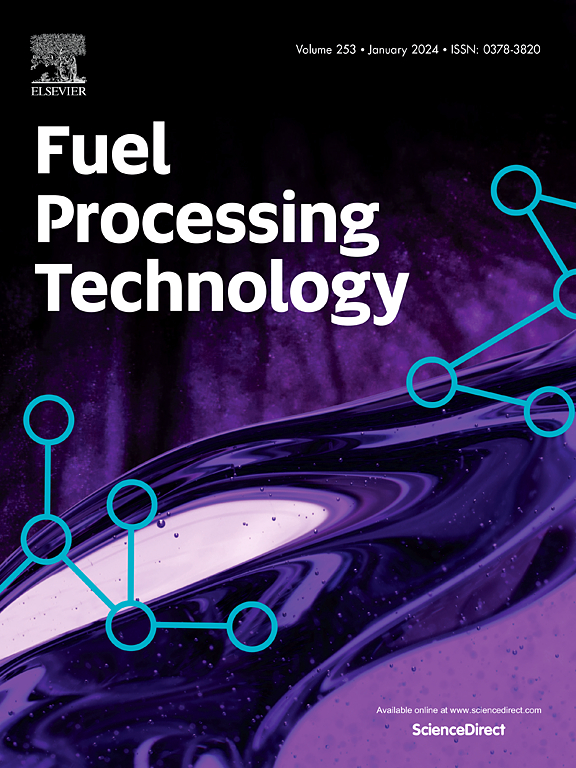Effects of wall temperature on non-premixed micro-combustion: A comparative experimental study of copper and aluminum in Swiss-roll chambers
IF 7.7
2区 工程技术
Q1 CHEMISTRY, APPLIED
引用次数: 0
Abstract
Micro-combustors, vital for compact power and propulsion, face significant challenges in maintaining flame stability and achieving high blow-off limits. This study experimentally investigated counterflow non-premixed methane‑oxygen combustion in an innovative Swiss-roll chamber, examining bodies crafted from copper, aluminum, and steel at varying wall temperatures. Our primary objective was to thoroughly evaluate how these distinct body materials impact flame dynamics and overall micro-combustion performance. We utilized advanced diagnostic techniques, including spectroscopy and RGB image processing, for detailed analysis. Results showed copper's inherent catalytic properties notably enhanced combustion, with radical radiation intensity increasing by up to 30 % as chamber temperature rose. Conversely, in the aluminum chamber, surface adsorption of radicals by the formed alumina layer hindered radical radiation, weakening it with rising temperature. Notably, no flame was observed in the steel chamber. These findings unequivocally demonstrate the profound influence of body material on micro-combustion performance. This research offers valuable, material-specific insights crucial for the optimal design and precise optimization of next-generation micro-combustion devices, guiding material selection for enhanced efficiency and reliability in applications like micro-thermophotovoltaic systems and micro-thrusters.
壁面温度对非预混微燃烧的影响:铜和铝在瑞士辊燃烧室的对比实验研究
对于小型动力和推进装置至关重要的微型燃烧室,在保持火焰稳定性和实现高吹灭极限方面面临着重大挑战。本研究在一个创新的瑞士滚室中实验研究了逆流非预混甲烷-氧燃烧,研究了不同壁温下由铜、铝和钢制成的阀体。我们的主要目标是彻底评估这些不同的车身材料如何影响火焰动力学和整体微燃烧性能。我们利用先进的诊断技术,包括光谱学和RGB图像处理,进行详细的分析。结果表明,铜固有的催化性能显著增强了燃烧,随着燃烧室温度的升高,自由基辐射强度增加了30%。相反,在铝室中,形成的氧化铝层对自由基的表面吸附阻碍了自由基的辐射,随着温度的升高,自由基的辐射减弱。值得注意的是,在钢室中没有观察到火焰。这些发现明确地证明了车身材料对微燃烧性能的深刻影响。这项研究为下一代微燃烧装置的优化设计和精确优化提供了有价值的、特定材料的见解,指导材料的选择,以提高微热光伏系统和微推进器等应用的效率和可靠性。
本文章由计算机程序翻译,如有差异,请以英文原文为准。
求助全文
约1分钟内获得全文
求助全文
来源期刊

Fuel Processing Technology
工程技术-工程:化工
CiteScore
13.20
自引率
9.30%
发文量
398
审稿时长
26 days
期刊介绍:
Fuel Processing Technology (FPT) deals with the scientific and technological aspects of converting fossil and renewable resources to clean fuels, value-added chemicals, fuel-related advanced carbon materials and by-products. In addition to the traditional non-nuclear fossil fuels, biomass and wastes, papers on the integration of renewables such as solar and wind energy and energy storage into the fuel processing processes, as well as papers on the production and conversion of non-carbon-containing fuels such as hydrogen and ammonia, are also welcome. While chemical conversion is emphasized, papers on advanced physical conversion processes are also considered for publication in FPT. Papers on the fundamental aspects of fuel structure and properties will also be considered.
 求助内容:
求助内容: 应助结果提醒方式:
应助结果提醒方式:


